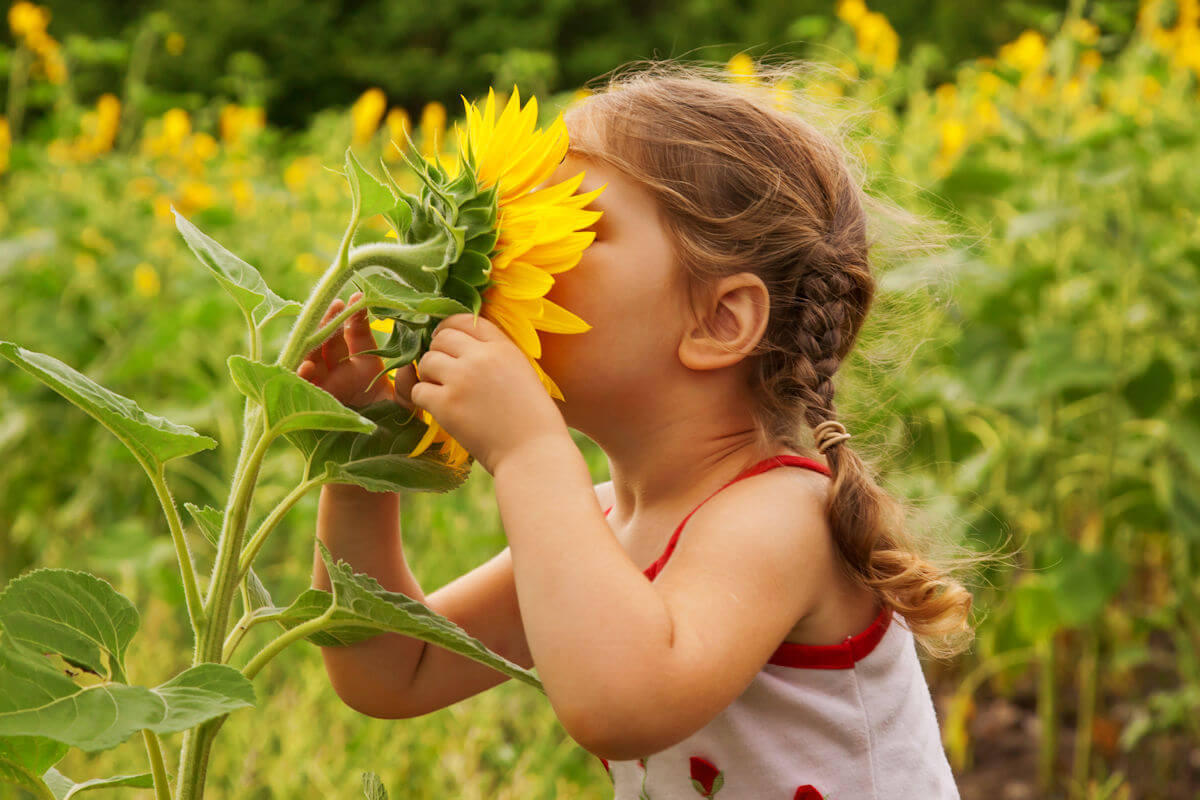マンションの窓から見える景色はビルの谷間、子どもが遊ぶ場所は舗装された公園。都市部で暮らす日本の家庭では、子どもが自然に触れる機会が年々減少しています。けれども幼児教育の現場では、自然体験こそが情緒の安定や自己肯定感の源になると繰り返し指摘されてきました。実際、国内外の研究でも、森や海、土や水といった自然環境が子どもの心身にポジティブな影響を与えることが示されています。本稿では、自然との触れ合いが子どもの心にどのような変化をもたらすのかを六つの視点から整理し、家庭で実践できる具体策を紹介します。
1 情緒の安定:「緑」がもたらす深呼吸効果
緑の中で深呼吸すると、胸の奥まで空気が届くような解放感があります。これは単なる気分ではありません。木々が発するフィトンチッドや適度な湿度、土の香りが交感神経の興奮を抑え、副交感神経を優位にすることで心拍数と血圧を下げるからです。子どもは大人より感覚が鋭敏なため、このリラックス効果をダイレクトに受け取ります。
幼稚園の園庭に「小さな森」を導入したある園では、週3回以上そこで遊ぶ子どもの方が、そうでない子どもよりも昼寝に入るまでの時間が平均6分短かったという報告があります。情緒が落ち着くことで入眠がスムーズになり、生活リズムが整う――これが自然がくれる第一の恩恵です。
2 自己肯定感の向上:「できた!」の連鎖を生むフィールド
自然環境には、滑り台やジャングルジムのような“決められた遊び方”が存在しません。木の根をまたいでバランスを取る、石を積み上げて塔を作る、川べりで葉っぱの舟を流すなど、遊び方を決めるのは子ども自身です。つまり自然は、失敗と成功のサイクルを自分のペースで回せる自由な実験場。
「枝を拾って剣に見立てたら折れてしまった」「でも次はもっと太い枝を選んでうまくいった」。この小さな成功体験が「自分はできる」という感覚を積み上げ、自己肯定感を育みます。家庭では、「その枝、どうやって選んだの?」とプロセスを尋ね、試行錯誤を言語化させることで達成感をさらに強化できます。
3 創造性と問題解決力:自然は最高のSTEAM教材
STEAM教育(科学・技術・工学・芸術・数学)が注目される今、自然ほど多角的な学びを提供してくれる教材はありません。たとえば河原で石を積む遊びは、重心や摩擦といった物理法則を体感的に学ぶ「サイエンス」。枝を組んで秘密基地を作るのは「エンジニアリング」。拾ったどんぐりでアート作品を作れば「アート」。
ポイントは、大人が正解を与えないことです。「どうしたら石が倒れにくいと思う?」と問いかけ、子どもが自分で仮説を立てるプロセスを尊重します。失敗しても「面白い形だったね」と創造性を評価すれば、子どもは再挑戦を楽しむようになります。
4 社会性と協調性:共同作業が生む「小さなコミュニティ」
自然遊びは、複数の子どもが同じ空間で同じ素材を共有する場面が多く、自然と協力行動が生まれます。木の枝を集めて大きな橋を作るとき、誰かが指揮を執り、誰かが資材を運び、誰かが完成を見守るなど、役割分担とコミュニケーションが不可欠です。
また、年齢や発達段階の違う子ども同士が関わりやすいのも自然環境の特徴です。年長児が年少児の手を取り、川を渡る手助けをする場面では、思いやりやリーダーシップが自然に育まれます。親は遠巻きに見守り、トラブルが起きたときだけ仲裁役に回ることで、子ども同士の解決力を伸ばせます。
5 レジリエンス:自然が教える「変化を受け入れる力」
山道は雨が降ればぬかるみ、晴れれば乾く。海辺は潮の満ち引きで景色が変わり、森は季節ごとに色を変えます。子どもが自然の中で遊ぶということは、絶えず変化する環境に身を置くことです。
たとえば、前日に作った砂の城が翌日には波にさらわれて消えている。それを嘆くだけでなく、「また作ろう」「もっと高くしよう」と立ち上がる経験が、心の回復力=レジリエンスを鍛えます。親は「壊れちゃったね」で終わらせず、「どうしたら次は残るかな?」と問いかけ、変化への適応をポジティブに捉える視点を示しましょう。
6 家庭でできる具体的アプローチ:都市でも始められる五つの工夫
- 週末“緑時間”のルーティン化
土日の午前中だけでも近隣の公園や河川敷に行く習慣を作りましょう。天気が悪い日はレインコートを着て雨音を楽しむのも立派な自然体験です。 - ベランダ菜園で“育つ喜び”を可視化
プランター一つでも、芽が出て花が咲き、実がなる過程を観察できます。水やりを子どもの担当にすると責任感も育ちます。 - “持ち帰りOK”ボックスの設置
拾った木の実や石を入れる箱を玄関に置き、帰宅後に名前を調べたり標本にしたりすると探究心が続きます。 - 自然図鑑とデジタルを組み合わせる
図鑑で昆虫の名前を調べ、スマホで鳴き声を検索するなど、アナログとデジタルを行き来させると理解が深まります。 - 家族ミーティングで“自然ニュース”を共有
「今日見つけた一番きれいな葉っぱ」「川で見た魚」などを夕食時に発表する時間を設けると、自然体験が会話の中心になり、学びが定着します。
まとめ
自然との触れ合いは、情緒の安定、自己肯定感、創造性、社会性、レジリエンス、子どもの心に多面的な栄養を届ける“ビタミン”のような存在です。そして、そのビタミンを毎日の生活に取り入れる役割を担うのが家庭です。遠出をしなくても、近所の公園、ベランダのプランター、雨の日の窓辺など、視点を少し変えるだけで自然はすぐそばにあります。
今日から一つ週末の“緑時間”でもベランダ菜園でもかまいません。親子で自然に触れる時間をデザインしてみてください。そこで交わす「きれいだね」「不思議だね」という言葉が、子どもの心に一生残る“緑の記憶”となり、未来へ踏み出す力を静かに支えてくれるはずです。
The Impact of Nature on Children’s Emotional Well‑Being
Apartment windows often frame a landscape of steel and asphalt, and playgrounds are paved. For many Japanese families, opportunities for children to engage with nature are dwindling. Yet educators emphasize that contact with nature is a key source of emotional stability and self‑esteem. Studies worldwide confirm that forests, oceans, soil, and water exert positive effects on children’s minds and bodies. This article outlines six key benefits of nature contact and offers practical ways families—even in cities—can weave it into daily life.
1 Emotional Calm—Deep Breaths Among the Trees
Breathing in a green space feels liberating, and science explains why: phytoncides from trees, balanced humidity, and the scent of soil shift the nervous system toward relaxation, lowering heart rate and blood pressure. Children, with sharper senses, absorb this effect even more. One Japanese kindergarten that created a “mini‑forest” on its grounds found that children who played there three times a week fell asleep at naptime six minutes faster on average than their peers. Better sleep patterns are the first gift nature offers.
2 Boosting Self‑Esteem—A Field of “I Did It!” Moments
Unlike playground equipment, nature lacks prescribed uses. Children decide how to balance on roots, stack stones, or float leaf boats. Nature is thus a free laboratory of trial and error. Each small success—choosing a sturdier stick after the first one snaps—adds a brick to the wall of self‑confidence. Parents can reinforce this by asking about the process: “How did you pick that stick?” Such questions help children articulate their problem‑solving steps and savor achievement.
3 Creativity and Problem‑Solving—Nature as the Ultimate STEAM Kit
In the era of STEAM education, nothing rivals nature’s interdisciplinary richness. Stone‑stacking on a riverbank teaches physics; building a stick fort models engineering; crafting acorn art nurtures creativity. The key is not to supply the “right” answer. Ask, “How can we keep the stones from falling?” and honor each hypothesis. Even when structures collapse, praising originality encourages joyful persistence.
4 Social Skills—Forming Mini‑Communities Through Shared Tasks
Nature play often involves shared materials and space, naturally fostering cooperation. Building a bridge of branches requires leadership, logistics, and mutual encouragement. Mixed‑age interaction is common: older children help younger ones across a stream, cultivating empathy and leadership. Parents should observe from a distance, stepping in only to mediate serious conflicts, thus allowing children’s own negotiation skills to grow.
5 Resilience—Learning to Embrace Change
Trails turn muddy after rain and dry under sun; tides reshape beaches; forests change color with seasons. Playing in nature means living within constant change. When yesterday’s sandcastle is gone with the tide, children may grieve—but rebuilding, or building higher, strengthens resilience. Parents can guide this mindset by asking, “How could we make it last next time?” turning loss into adaptive creativity.
6 Five Practical Approaches for City Families
- Weekend “Green Time”
Even a morning in a local park or riverside counts. On rainy days, enjoy the sound of raindrops in raincoats—weather itself is a lesson. - Balcony Gardening
A single planter lets children observe sprouting, flowering, and fruiting. Assign watering duties to instill responsibility. - “Take‑Home Treasures” Box
Keep a box by the door for found stones or seeds. Research their names or create displays to sustain curiosity. - Blend Books and Digital Tools
Use a field guide for basic facts, then search online for bird songs or plant time‑lapse videos to deepen understanding. - Family “Nature News” Sharing
At dinner, each member reports the prettiest leaf or coolest insect spotted that day, anchoring nature at the heart of family conversation.
Conclusion
Nature supplies emotional vitamins—calm, confidence, creativity, social grace, resilience. Families administer the supplement by embedding green moments into everyday life. Whether it’s a park visit, balcony gardening, or watching rain from the window, nature is closer than we think. Start with one step this week: perhaps a Saturday “green hour” or planting herbs together. The words you share—“Beautiful, isn’t it?” “How curious!”—will become lifelong green memories, quietly empowering your child’s journey into the future.




コメント